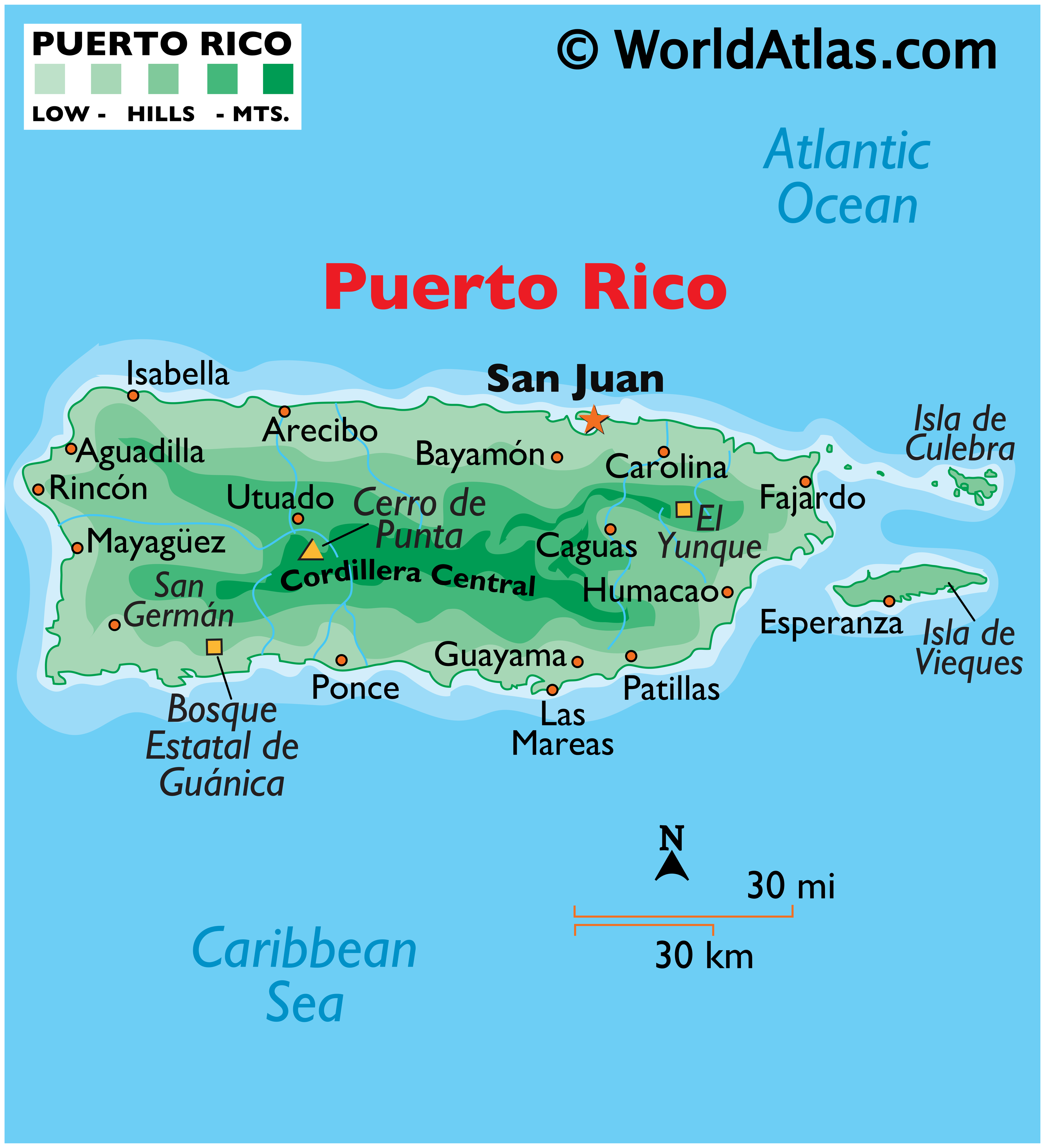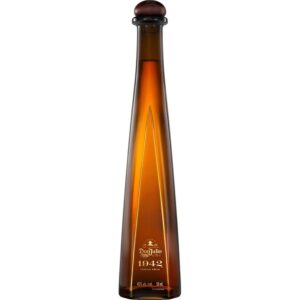Puerto Rico is an island located in the Caribbean Sea. It is a U.S.
Territory with a diverse landscape. Puerto Rico’s map showcases its rich geographical diversity, from lush mountains to pristine beaches. The island’s terrain includes the Central Mountain Range, coastal lowlands, and stunning offshore islands like Vieques and Culebra. San Juan, the capital, lies on the northern coast and serves as the main hub for culture and commer
Puerto Rico’s strategic location makes it a key destination for travelers and trade in the Caribbean. Exploring the map reveals a blend of urban areas, historical landmarks, and natural reserves. Whether you’re planning a vacation or studying its geography, Puerto Rico’s map offers a glimpse into a vibrant and dynamic region.

Credit: www.worldatlas.com
Geographical Location
Puerto Rico, a captivating island in the Caribbean, offers a unique blend of culture, history, and natural beauty. Understanding its geographical location provides insight into its rich biodiversity, strategic importance, and cultural influences. Nestled between the Caribbean Sea and the North Atlantic Ocean, Puerto Rico stands as a jewel of the Antilles.
Location In The Caribbean
Puerto Rico sits in the northeastern Caribbean Sea. It is around 1,000 miles southeast of Miami, Florida. The island lies east of the Dominican Republic and west of the Virgin Islands. This prime location makes Puerto Rico a crossroads of cultures and trade routes.
Coordinates And Boundaries
The island’s coordinates are approximately 18.2208° N latitude and 66.5901° W longitude. It spans about 100 miles in length and 35 miles in width. The total area is roughly 3,515 square miles, making it the smallest of the Greater Antilles.
Neighboring Islands
Puerto Rico is part of an archipelago, including the main island and several smaller ones. Notable neighbors include Vieques, Culebra, and Mona Island. Each offers unique attractions and contributes to Puerto Rico’s diverse ecosystem.
Climate And Topography
The island boasts a tropical climate with average temperatures between 70°F and 85°F. The terrain features mountains, coastal plains, and beautiful beaches. The central mountain range, known as “La Cordillera Central,” adds to the island’s scenic beauty.
| Aspect | Details |
|---|---|
| Coordinates | 18.2208° N, 66.5901° W |
| Area | 3,515 square miles |
| Length | 100 miles |
| Width | 35 miles |
Strategic Importance
Puerto Rico’s location has made it a strategic point for military and trade activities. The island serves as a gateway to the Caribbean and Latin America. Its ports facilitate the movement of goods, boosting the local economy.
History
Introduction paragraph about Map of Puerto Rico and History…
The map of Puerto Rico reveals a rich tapestry of history. From its indigenous roots to its modern-day status, the island’s past is fascinating. Understanding this history helps appreciate the diverse culture and the geographical significance of Puerto Rico.
Indigenous Heritage
Before European arrival, the Taino people lived in Puerto Rico. They called the island “Borikén.” The Taino culture influenced many aspects of Puerto Rican life. Their language, art, and traditions still resonate today.
Spanish Colonization
Christopher Columbus arrived in 1493. Puerto Rico became a Spanish colony. The Spanish built forts, towns, and roads. They introduced Christianity and European customs. This era lasted over 400 years.
American Era
In 1898, the United States took control after the Spanish-American War. Puerto Rico became a U.S. territory. American influence grew in many areas. English and Spanish are now both official languages.
Modern Developments
Today, Puerto Rico blends its past with modern life. The island is a popular tourist destination. Its history is visible in historic sites, museums, and festivals. The map of Puerto Rico tells the story of its journey through time.
| Era | Significant Changes |
|---|---|
| Indigenous | Taino culture, Borikén |
| Spanish Colonization | Forts, Christianity, European influence |
| American Era | U.S. territory, Bilingualism |
| Modern Developments | Tourism, Historic preservation |
Political Divisions
Puerto Rico, a vibrant island in the Caribbean, is rich in culture, history, and natural beauty. Understanding its political divisions helps grasp the local governance and administrative setup. These divisions shape the island’s politics, services, and community life, making it essential for residents and visitors alike.
Political Divisions Of Puerto Rico
Puerto Rico is divided into several political regions. Each region has unique features and responsibilities. These divisions include municipalities, barrios, and sectors.
Municipalities
Puerto Rico consists of 78 municipalities. Each municipality acts like a small city with its own local government. The mayor and the municipal assembly govern each municipality, ensuring local services and community needs are met.
| Municipality | Capital | Population |
|---|---|---|
| San Juan | San Juan | 342,259 |
| Ponce | Ponce | 166,327 |
| Mayagüez | Mayagüez | 89,080 |
Barrios
Municipalities are further divided into barrios. Barrios are similar to neighborhoods or districts. Each barrio has its own unique culture and local traditions. Barrios help manage resources and services within the municipalities.
- San Juan: Includes Santurce, Río Piedras, and Hato Rey.
- Ponce: Includes Canas, Playa, and Bucaná.
- Mayagüez: Includes Sabanetas, Río Cañas, and Miradero.
Sectors
Barrios are divided into smaller units called sectors. Sectors are the smallest political divisions in Puerto Rico. They focus on very localized issues and community needs. This level of division ensures that every community receives attention.
- Santurce: Miramar, Condado, Isla Grande
- Canas: Tibes, Capitanejo, Magueyes
- Sabanetas: Liceo, Malezas, Quemado
Physical Features
Puerto Rico is a beautiful island with diverse physical features. It has mountains, beaches, and rivers that make it unique. This blog post will explore these features and help you understand the island’s natural beauty.
Mountains
Puerto Rico has stunning mountains that offer breathtaking views. The island’s central region is home to the Cordillera Central, the main mountain range.
- Cerro de Punta: The highest peak, standing at 4,390 feet.
- El Yunque: A famous rainforest with lush greenery and waterfalls.
These mountains are not just tall; they are also rich in biodiversity. Many rare plants and animals live here. The mountains are perfect for hiking and exploring nature.
| Mountain | Height (feet) |
|---|---|
| Cerro de Punta | 4,390 |
| El Yunque Peak | 3,533 |
Visiting these mountains gives you a chance to see the island from above. The views are amazing, and the air is fresh. You can also find many rivers and waterfalls in the mountains.
Beaches
Puerto Rico is famous for its beautiful beaches. The island has over 270 miles of coastline, offering many sandy shores.
- Flamenco Beach: Known for its clear blue water and white sand.
- Luquillo Beach: A popular spot with golden sand and gentle waves.
These beaches are perfect for swimming, sunbathing, and water sports. You can also enjoy snorkeling and see colorful fish and coral reefs.
| Beach | Location |
|---|---|
| Flamenco Beach | Culebra Island |
| Luquillo Beach | Luquillo |
Beachgoers love the warm, sunny weather and the gentle breezes. The beaches are family-friendly, making them ideal for picnics and fun activities.
Rivers
Puerto Rico has many rivers that flow through its lush landscape. These rivers are vital for the island’s ecosystem and provide fresh water.
- Río Grande de Loíza: The longest river, stretching 40 miles.
- Río Camuy: Known for its underground caves and river system.
Rivers are not just for drinking water; they are also great for recreation. You can go kayaking, tubing, or enjoy a peaceful boat ride.
| River | Length (miles) |
|---|---|
| Río Grande de Loíza | 40 |
| Río Camuy | 24 |
The rivers also support many plants and animals. They flow through forests and mountains, creating beautiful scenery. Exploring the rivers lets you see another side of Puerto Rico’s natural beauty.
Climate
Puerto Rico’s climate is a significant aspect that influences both its natural beauty and the lifestyle of its residents. The island’s weather patterns are a key factor for tourists and locals alike. Understanding the climate can help in planning trips and daily activities. Let’s explore the climate of Puerto Rico in detail.
Temperature
Puerto Rico enjoys a tropical climate, meaning it is warm year-round. The average temperature ranges from 70°F to 85°F. In the coastal areas, temperatures can reach up to 90°F during summer months. The central mountainous regions are cooler, with temperatures dropping to 60°F at night.
Rainfall
Rainfall varies across the island. The northern and eastern regions receive more rain, averaging 60 inches per year. The southern and western parts are drier, with an average of 36 inches annually. The wettest months are from May to October, while the driest period is from December to March.
Humidity
Puerto Rico’s humidity levels are relatively high due to its tropical climate. Humidity ranges from 70% to 80% throughout the year. This can make the air feel warmer than the actual temperature.
Hurricane Season
Hurricane season in Puerto Rico runs from June to November. During this period, the island is at risk of tropical storms and hurricanes. It is important to stay updated with weather forecasts and have an emergency plan.
Best Time To Visit
The best time to visit Puerto Rico is from mid-April to June. This period falls between the busy winter season and the rainy summer season. Temperatures are pleasant, and there is less rainfall, making it ideal for outdoor activities and beach trips.
| Region | Average Temperature | Rainfall |
|---|---|---|
| Coastal Areas | 75°F – 90°F | 36 – 60 inches |
| Mountainous Regions | 60°F – 75°F | 50 – 70 inches |

Credit: www.pinterest.com
Tourism
Puerto Rico is a beautiful island in the Caribbean. This tropical paradise offers stunning landscapes, rich history, and vibrant culture. With a map of Puerto Rico in hand, travelers can explore its diverse attractions. From bustling cities to serene beaches, Puerto Rico is a top destination for tourists. Let’s dive into the key aspects of tourism on this enchanting island.
Popular Destinations
Puerto Rico boasts many popular destinations that attract tourists from all over the world. Here are some must-visit places:
- San Juan: The capital city is a mix of old and new. Explore the historic Old San Juan with its cobblestone streets and colorful buildings. Visit the modern Condado district for shopping and nightlife.
- El Yunque National Forest: This lush rainforest is a haven for nature lovers. Hike through scenic trails, swim in natural pools, and enjoy breathtaking waterfalls.
- Ponce: Known as the “Pearl of the South,” Ponce is rich in history and culture. Visit the Ponce Museum of Art and the beautiful Plaza Las Delicias.
- Vieques and Culebra: These smaller islands offer pristine beaches and crystal-clear waters. They are perfect for snorkeling, diving, and relaxation.
Cultural Attractions
Puerto Rico’s culture is a blend of Spanish, African, and Taino influences. This rich heritage is evident in its cultural attractions:
- Castillo San Felipe del Morro: This historic fortress in San Juan dates back to the 16th century. It offers stunning views of the Atlantic Ocean and an insight into Puerto Rico’s colonial past.
- La Fortaleza: Also known as the Governor’s Mansion, this is the oldest executive mansion in continuous use in the Americas. It is a UNESCO World Heritage Site.
- Museo de Arte de Puerto Rico: Located in San Juan, this museum showcases Puerto Rican art from the 17th century to the present day. It is a must-visit for art enthusiasts.
- Fiestas de la Calle San Sebastián: This annual festival in Old San Juan is a celebration of Puerto Rican culture. Enjoy music, dance, food, and crafts during this lively event.
Outdoor Activities
Puerto Rico is a playground for outdoor enthusiasts. The island offers a variety of activities for adventure seekers:
- Surfing: The west coast, particularly Rincón, is famous for its excellent surfing conditions. Both beginners and experienced surfers can enjoy the waves here.
- Snorkeling and Diving: The clear waters around Puerto Rico are perfect for exploring marine life. Popular spots include Culebra, Vieques, and La Parguera.
- Hiking: Besides El Yunque National Forest, Puerto Rico has numerous trails. The Guánica Dry Forest and Toro Negro State Forest offer unique hiking experiences.
- Kayaking: Paddle through the bioluminescent bays at night. Mosquito Bay in Vieques is one of the brightest bioluminescent bays in the world.

Credit: www.moon.com
Frequently Asked Questions
What Is The Prettiest Town In Puerto Rico?
Old San Juan is often considered the prettiest town in Puerto Rico. Its colorful colonial buildings and cobblestone streets attract many visitors.
How Long Does It Take To Drive Across Puerto Rico?
Driving across Puerto Rico takes about 2 to 3 hours. This depends on traffic and your starting point. The island is approximately 100 miles long and 35 miles wide. Roads are generally well-maintained, making the journey relatively smooth. Plan for possible delays in urban areas.
Do You Need A Passport To Go To Puerto Rico?
No, U. S. citizens do not need a passport to travel to Puerto Rico. A valid government-issued ID is sufficient.
Where Is Puerto Rico Part Of The Us?
Puerto Rico is a U. S. territory located in the Caribbean. It is not a state but has U. S. citizenship.
Conclusion
Exploring the map of Puerto Rico offers endless adventure. From vibrant cities to serene beaches, there’s something for everyone. Plan your trip with our detailed guide. Discover hidden gems and cultural landmarks across the island. Dive into Puerto Rico’s unique charm and create unforgettable memories.
Happy travels!




